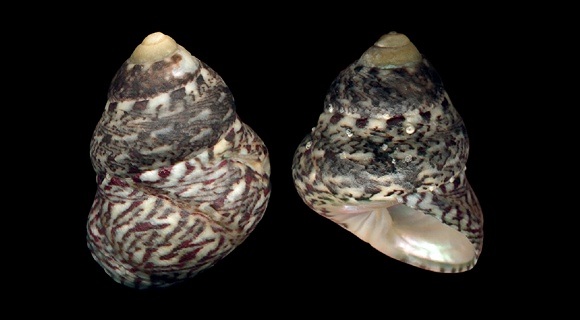
Grazer and deposit feeder in the rocky upper infralittoral.
Original taxon: Monodonta articulata.
« Shell very strong, thick. Spire conoid, rather high, composed of six convex whorls. Last whorl depressed a little below the suture, then convex. The first whorls are usually eroded, the following ones bearing decurrent furrows more or less deep, often obsolete on the last whorl, but always more marked around the umbilical region. Suture simple, shallow. Base of the last whorl convex, with a slight umbilical slit in adult individuals and perforated in young specimens. » – Bucquoy, Dautzenberg & Dollfus: Les mollusques marins du Roussillon vol. I fasc. X, Paris 1885, p.406.
An interesting synonym is Monodonta ulvae Risso, 1826.
On rocks, in shallow water, Cala d’Alivu, Isola Rossa, NW. Corsica. 27mm.
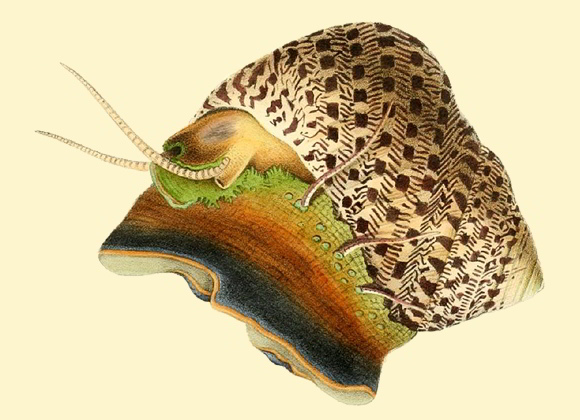
Above, the animal in G. P. Deshayes: “Description de quelques animaux de la famille des Trochidés des côtes de l’Algérie”, Annales de malacologie vol. I, Paris 1870, plate I fig.2.
« The foot is thick, of a dark grey on the underside, and can extend rather widely. The sharp margin that forms the periphery displays a very narrow area of yellow-fawn. all the upper surface is rough, as in the turbinatus; solely, in the region where arise the pedal tentacles, one sees rounded tubercles of a light green, irregularly scattered; one of them is a the base of each tentacle. The colour of the foot comprises a large marginal zone of a dark blue, almost black, at which succeeds, via a quite rapid merging, a brown, rather dak, which progressively fades towards the region of the tentacles. These are ciliate as in the previous species [turbinata]; but those of the foot and of the head are more noticeably ringed with blackish brown. The head is similar to the one of the previous species; its anterior extremity is of a beautiful green; the velum is shorter, and less serrated. » – Deshayes p.12-13.
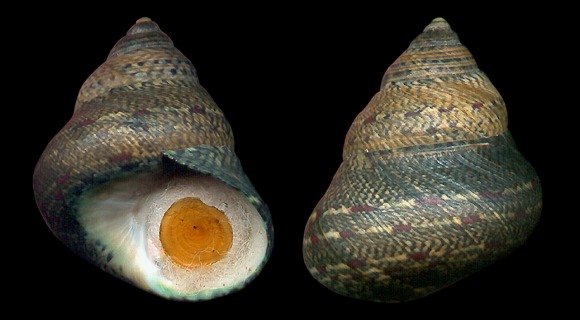
B. D. D.: « The area surrounding the umbilical cleft is flattened and often worn. Aperture rounded. Columella arched in the center and provided towards the base with nodular callosity. Labrum rounded, thickened and smooth inside. Colour: ash-gray background, crossed by several white decurrent bands, often of unequal width, articulated with reddish-brown spots. The intervals of these bands are adorned with numerous black or brown lines, arranged in irregular zigzags. Umbilical region white, sometimes tinged with green. Edge of the labrum articulated with white and black. » – Some named variants: depauperata, fulminea, lineolata, undata…
Under rock in shallow water, Portoferraio, Isola de Elba, Toscana, W. Italy. 27mm.
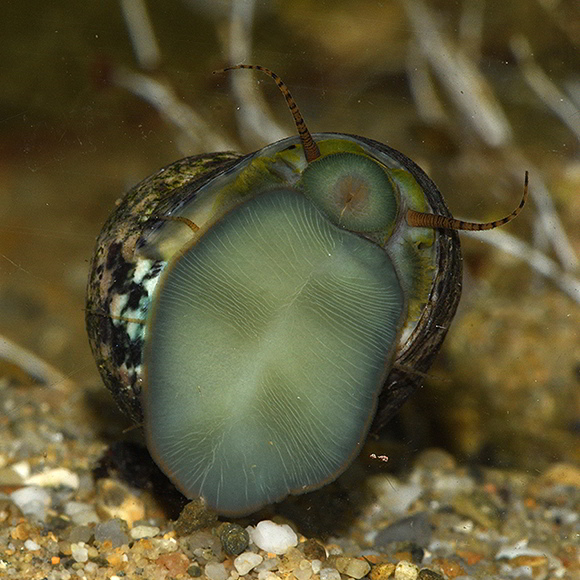
Original picture provided by A. Bertrand (FR).
– (CC BY-NC-SA) –
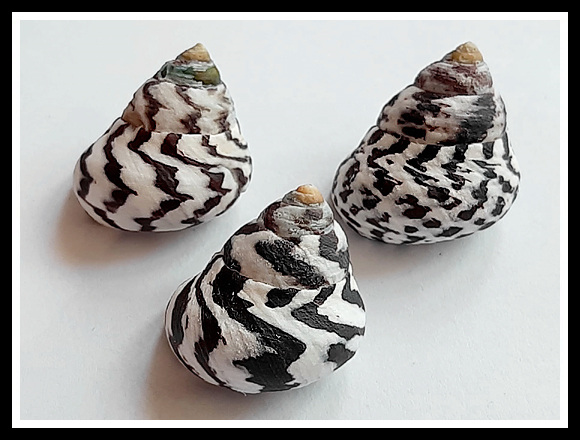
Jerba island, Gulf of Gabès, Tunisia. 28-30mm.
Original picture provided by M. Weinberger (CZ).
– (CC BY-NC-SA) –